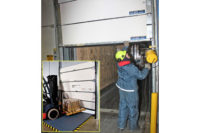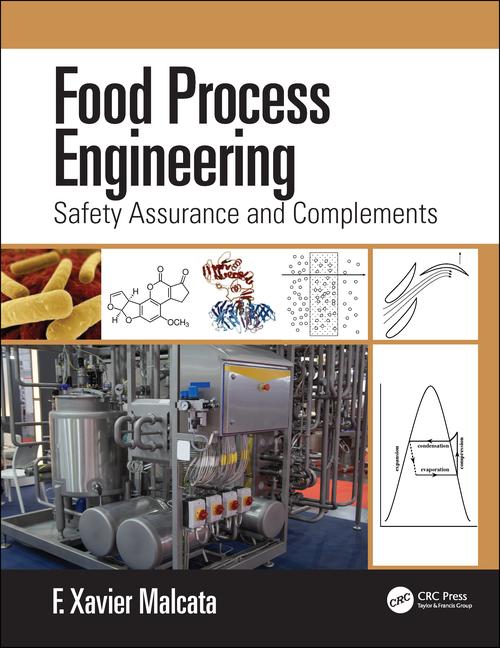TECH FLASH
Case history: Dock doors provide solutions that go beyond just safety
Examining opportunities to improve dock doors can yield productivity gains and good return on investment.

Doors must stand up to forklift damage, extreme temperatures and more. Source: TKO Dock Doors
For years, the primary function of loading dock equipment has been to ensure safe truck and trailer access for the drivers of forklifts and other material handling vehicles. First, the development of the dock leveler provided a secure platform between the truck and the dock. Powered restraints to prevent trucks from prematurely pulling away from the dock followed, drastically reducing the risk of accidents.
As material handling needs across the food logistics industry have become more sophisticated and greater demands are put on capital investments, management is increasingly looking to get more return on their loading dock investment. Here’s a look at how some food processing and distribution facilities have taken a closer look at solving productivity problems by focusing on dock doors.
Cold dock too cold
Few operations are harder on dock doors than poultry processing plants. The Alatrade Foods plant in Albertville, Ala. was no exception.
According to Kevin Parnell, plant manager, “We send out our products fresh. That means we must keep our dock at 45°F, and it must be washed down continuously to satisfy both USDA and our customers’ requirements.”
But even with the doors fully closed, the doorways were not always sealed. The tight space on this dock led to forklift impacts with the doors’ panels and tracks, causing damage and the potential for energy loss and contamination.
The impacts from forklifts resulted in deformed tracks, which can damage traditional sectional guide rollers, making the door difficult to open. The dock crew was often enticed to avoid the potential back strain associated with moving damaged doors and left the doors open, exposing the facility to the hot, humid Alabama summer.
As for winters, Parnell says, “With our constant washdowns, our target dock temperature kept the wash water from freezing. Yet the colder outside air, which could drop below freezing, came into the dock through the doorway gaps and turned the floor into an ice rink, making it dangerous for foot traffic.”
Laura Starace, territory manager for TKO Dock Doors, determined Alatrade needed doors that could stand up to the forklift damage and frequent washdowns. The TKO WelterWeight door has the ability to withstand these impacts, perform smoothly and provide a tight, consistent seal on the doorway.
The door has a unique, impactable design that allows it to stand up to the abuse it experiences on the dock. It uses heavy-duty, retractable plungers vs. rollers and rides in a V-grooved track. When a forklift or other object collides with the door, the plungers retract, allowing the door to release from the opening and prevent panel damage. If the door is knocked out of the track, a light pull on the door handles resets the door, putting it back into operation quickly—without damage—keeping workers’ backs safe and the facility cool.
Save-A-Lot at the loading dock
Retail grocers typically deal in tight margins, and for value chains such as Save-A-Lot, the margins are even thinner. Management for these operations is on a constant hunt to cut costs while providing quality products. Josh Brown, national sales manager for TKO, works with the chain throughout its network of distribution centers and recently assisted with its 300,000-sq.-ft. cold storage facility in Humboldt, Tenn.
As with all operations of this type, energy costs are a major operating budget item. Since opening in the 1980s, no matter how well it maintained its doors, the Humboldt facility had trouble holding a steady temperature of 40°F on the loading dock.
Though door damage is a common problem on most docks, it was not occurring at this facility because it used vertical storing dock levelers that doubled as steel barriers to protect the doors from impacts. Nevertheless, Plant Manager Tony Schmitt and his crew observed their doors were still inadequate because of poor weather seal design and panel thickness.
The Save-A-Lot engineering department consulted with Brown to find the right solution for doorways at 13 dock positions along their cold storage shipping wall. To cap these losses, Brown recommended the Save-A-Lot facility install the VertiCool door.
The VertiCool is designed specifically for use with vertical storing dock levelers on the temperature-controlled docks of cold storage facilities. The four-in. thick, R-23 rated panels provide superior thermal protection against energy loss and increased year-round efficiency.
The VertiCool door is equipped with dual side compression seals that fill gaps along the door and are mounted directly to the door panel rather than the door jamb. Raising the door removes the seals from the impact zone to avoid damage and provide a consistent, continuous seal. The VertiCool door also has an equally durable double-loop compression seal at the bottom for a tight seal on the warehouse floor without running the risk of the door freezing to the dock.
The number of thermal breaks is also reduced on the VertiCool. Rather than utilizing standard 24-in. high panels, the VertiCool employs 48-in. high panels, making for 50 percent less exposure between the panels.
Moreover, the VertiCool door offers a full-height polymer thermal break track, which is enclosed in an energy-reflective foil fabric. Unlike traditional metal tracks, the VertiCool’s track design not only helps prevent energy loss, it also prevents the accumulation of moisture on the dock that can cause mold buildup and make the dock floors dangerously slippery.
As the material handling needs of companies across a vast variety of industries become tasked with meeting higher demands, TKO is sure to develop dock door solutions to help them resolve their unique challenges beyond just keeping employees safe on the dock.
For more information, contact Josh Brown, national sales manager, TKO Doors, 800-575-3366, www.tkodoors.com .
Looking for a reprint of this article?
From high-res PDFs to custom plaques, order your copy today!








